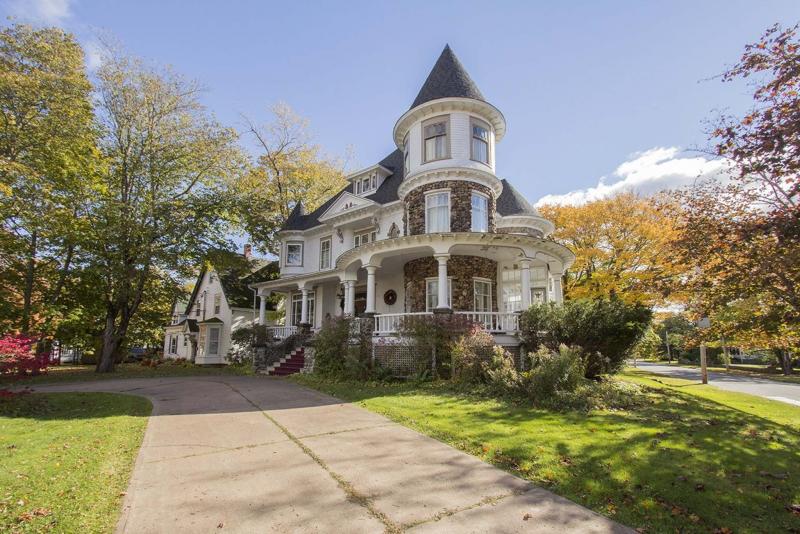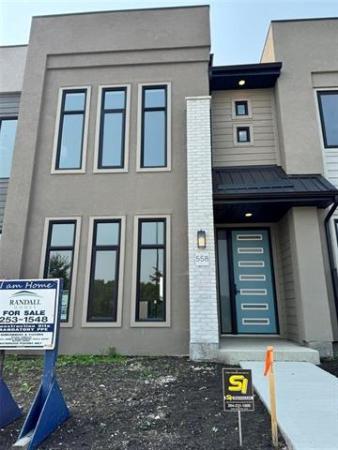Question: I have an 1860s Victorian home. The current walls, from inside to outside, are comprised of plaster, lath, cavity of nothing, horizontal barn boards, black tar paper, wood siding, and paint. I am debating whether to insulate the existing walls from the inside or the outside.
If I choose the inside route, I’d prefer not to tear down the existing plaster. I believe it offers some insulating benefit. I’d like to put rigid foam board right on top of the walls and wallpaper, tape the seams, and drywall.
I’m also exploring rigid foam installation in some areas from the outside. I’d again prefer to leave the existing wood siding in place — I hate demolition. I realize this will involve building out the windows. The internet is full of YouTube videos on how to apply foam board to new construction, on flat plywood. But, how do I go over angled wood siding, where each piece tucks under the piece above?
Can I put the rigid foam board right over this siding? Do I then install vertical strapping over the foam to attach vinyl siding? Do I need house wrap, and at which point? Do I need to strap the rigid foam away from the existing wood siding and house wrap? I am unsure about moisture penetration, if I’d rot the siding off, or if it would be pointless without house wrap.
Any help you can provide would be most appreciated.
— Shawn MacKinnon
Answer: Insulating an older home like yours may provide certain challenges, not the least of which is deciding what type of insulation to use and where to apply it. There may be several options, even for the different methods you are exploring. Opinions vary on these methods and I will offer you my view on a couple of these retrofits.
While it may be possible to install insulation from both the inside and outside of the existing walls in your older home, there may be benefits and downsides to either method, depending on the condition of the home. If the outside wood siding is deteriorated, or currently requires extensive scraping and painting, then that may be the preferred location for the new insulation. If the walls on the interior of the home are badly cracked, with damaged plaster, then interior upgrades may make more sense. From a modern air-sealing perspective, the exterior method should be superior and easier to accomplish, but that depends, again, on various conditions.
If you decide to go the interior route, you may be able to apply the rigid foam insulation over the old plaster, but there may be some criteria to evaluate ahead of making this choice. The window casing and baseboards will have to be removed and the flooring trimmed or cut back, unless it is wood flooring. You will have to ensure you are using extruded polystyrene insulation, or other more high-tech foam sheathing, that provides a good air/vapour barrier. A minimum of 10-centimetre-thick foam should be used, with all the seams and protrusions taped, to ensure the air/vapour barrier is sufficient. Otherwise, you will have to install complete 6 mil polyethylene sheathing, which may be quite difficult to seal in a home like yours.
The window and door frames will have to be built-up from the inside to accommodate new trim, after the drywall sheathing is applied. Also, the foam will either have to be strapped to install the drywall and baseboards, or very long drywall screws used that will penetrate the foam, old plaster and studs.
Finally, the electrical junction boxes for all light switches, receptacles and heating ducts will have to be extended to allow for the increased wall thickness and the devices reinstalled. This last item may often be overlooked when planning, but may be quite tricky with older electrical and heating systems.
The benefit of installation from the inside is that you may have a significantly improved look to the walls after completion. If the walls are not straight or plumb — which is highly likely in a home of your age — the strapping for the drywall can be shimmed to make the walls much straighter. Also, you may not have to remove the plaster. As long as your air/vapour barrier is well sealed, there should be little concern over deterioration from condensation.
Installation of rigid foam insulating materials on the exterior of the home has other major benefits. Recent research has suggested this may be a better location for the wall insulation, particularly rigid foam and especially for retrofit situations. Because the air/vapour barrier is integral in the insulation, there should be little concern for excessive condensation or moisture intrusion, as long as house wrap is properly installed. Doing all this messy work on the exterior of the home will be significantly less intrusive than interior renovations.
You do not have to remove the existing bevel siding, but doing so may provide a couple of benefits. First, removing the siding will allow you to inspect and replace any rotten wall sheathing beneath, as well as in the siding itself. Secondly, it will minimize the amount you have to build out the existing window brick moulding or trim. Finally, it will give you a relatively flat and smooth surface to secure the foam insulation and make it easier to seal around windows, doors, foundation and soffit areas.
You will have to install proper building paper or house wrap, either directly over the insulation or over strapping, to allow easier installation of the siding. An alternative is to install plywood or OSB completely over the foam, before the house wrap, but will add additional cost to the job.
Installing additional extruded polystyrene insulation, or equivalent, to your very old home will certainly make it more comfortable and energy efficient, but choosing where to apply it will depend on several factors. An exterior application may be easier, less disruptive and provide a better overall result, but interior insulation is also an option — depending on your desires.
Ari Marantz is the owner of Trained Eye Home Inspection Ltd. and the past president of the Canadian Association of Home & Property Inspectors — Manitoba (cahpi.mb.ca). Questions can be emailed to the address below. Ari can be reached at 204-291-5358 or check out his website at trainedeye.ca.
trainedeye@iname.com




